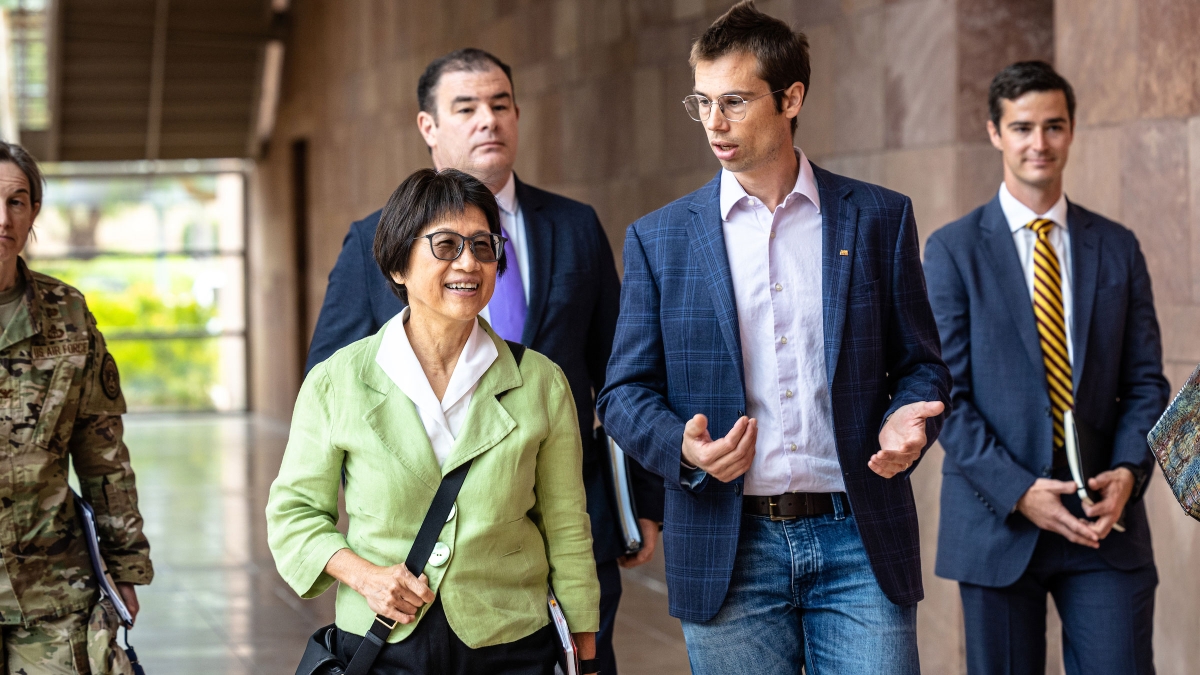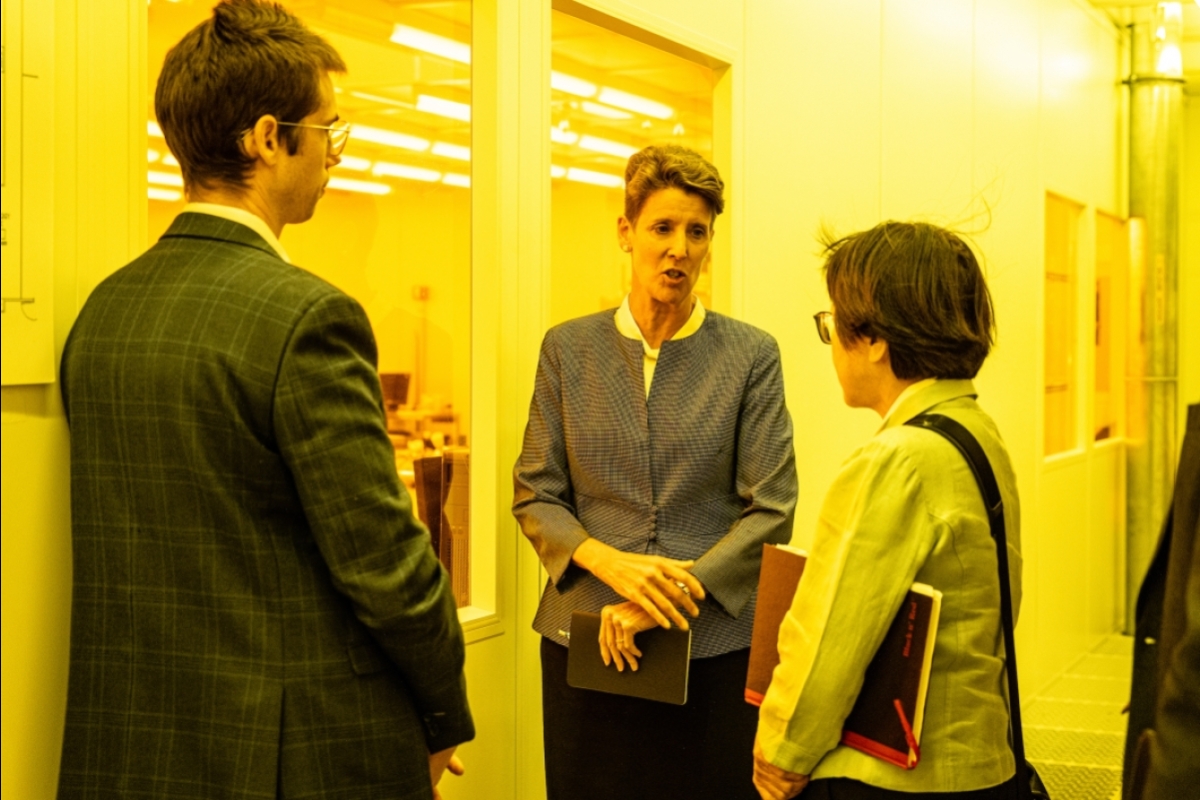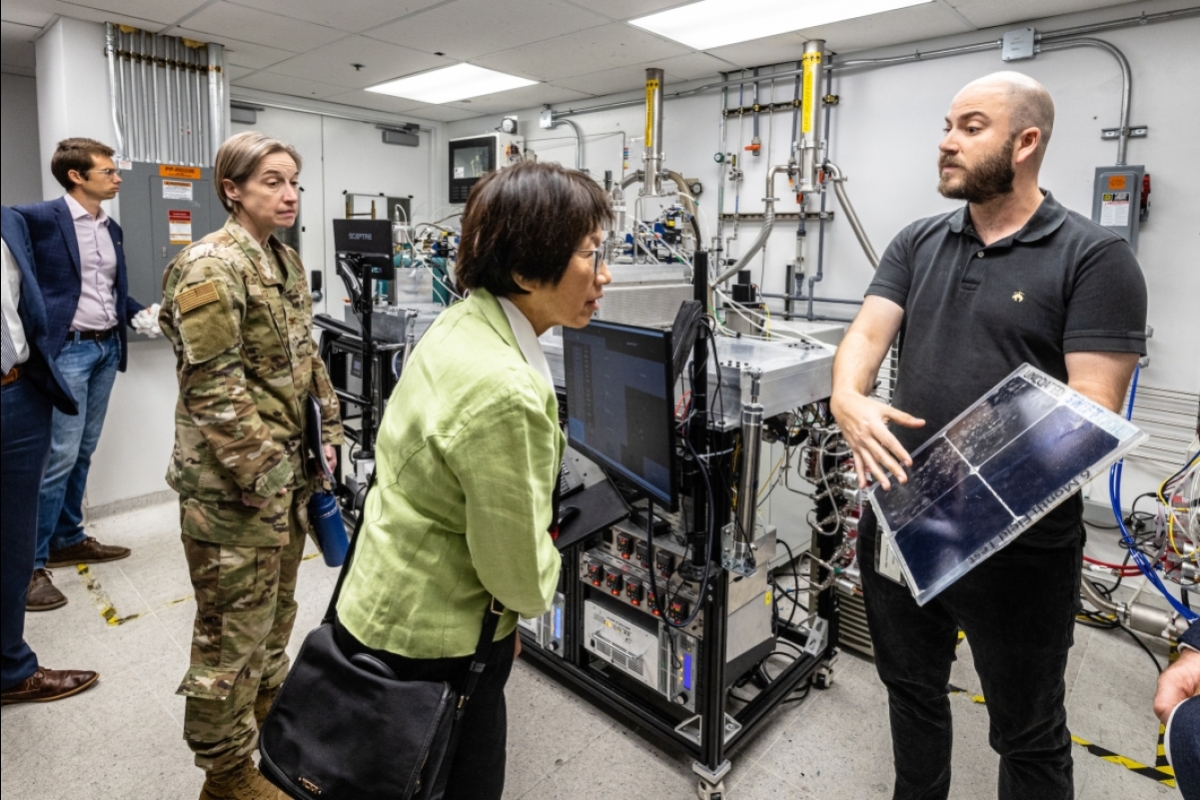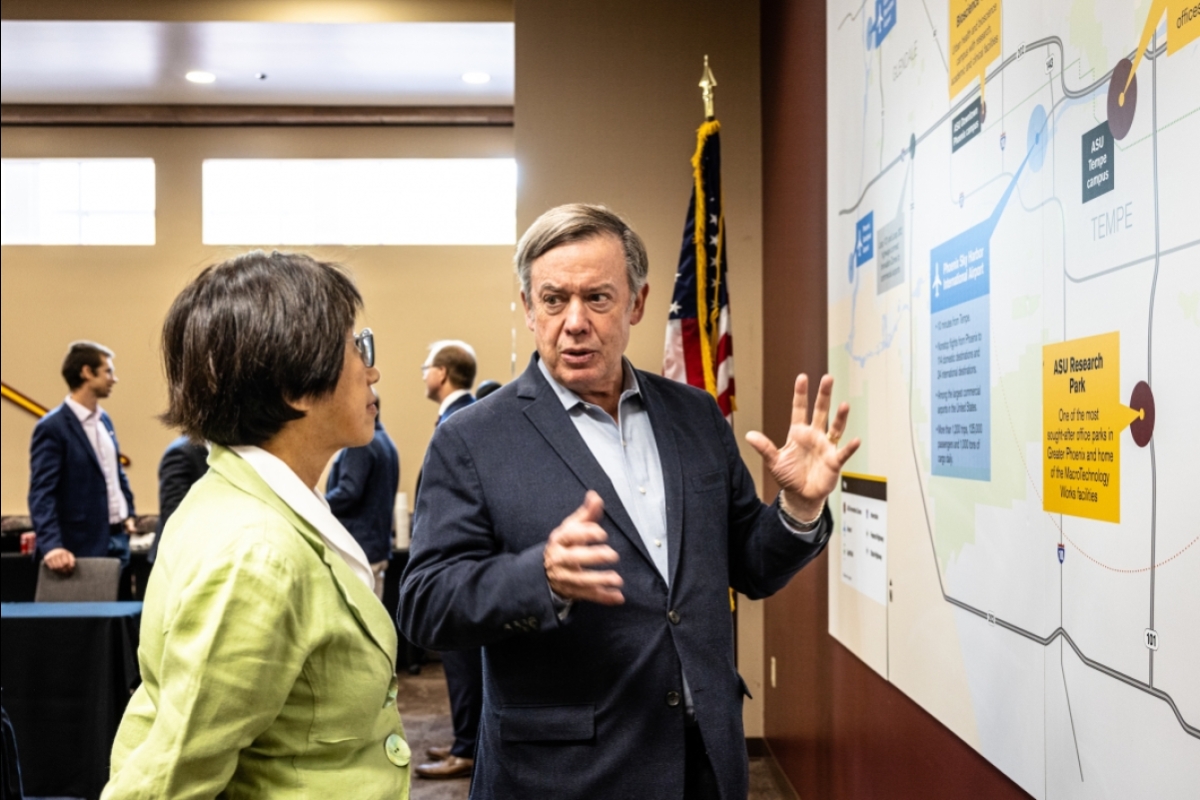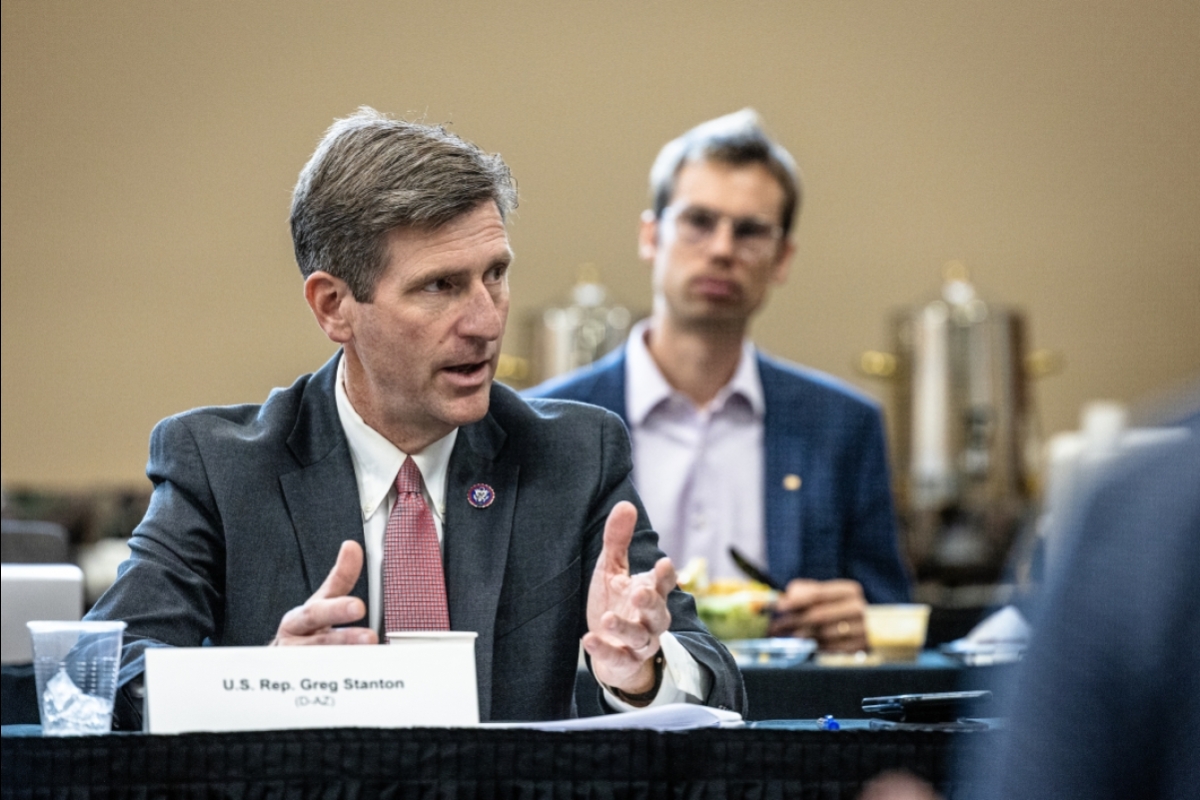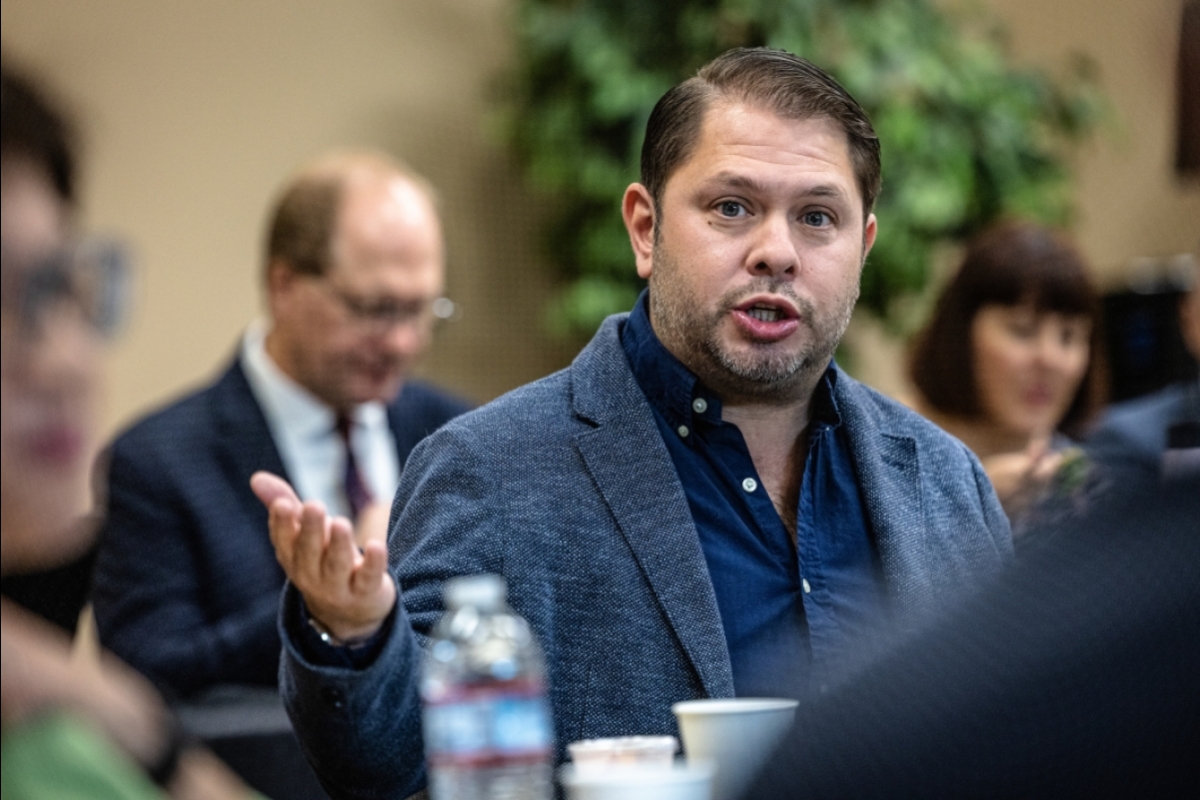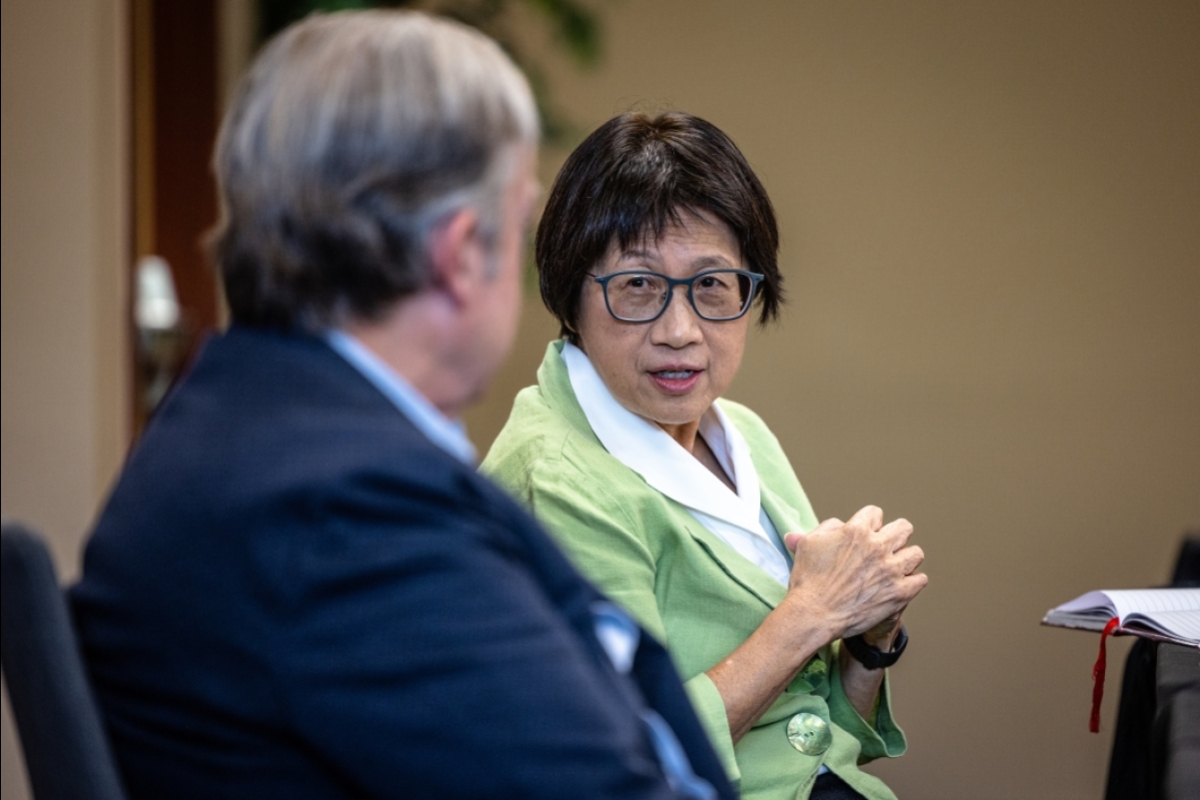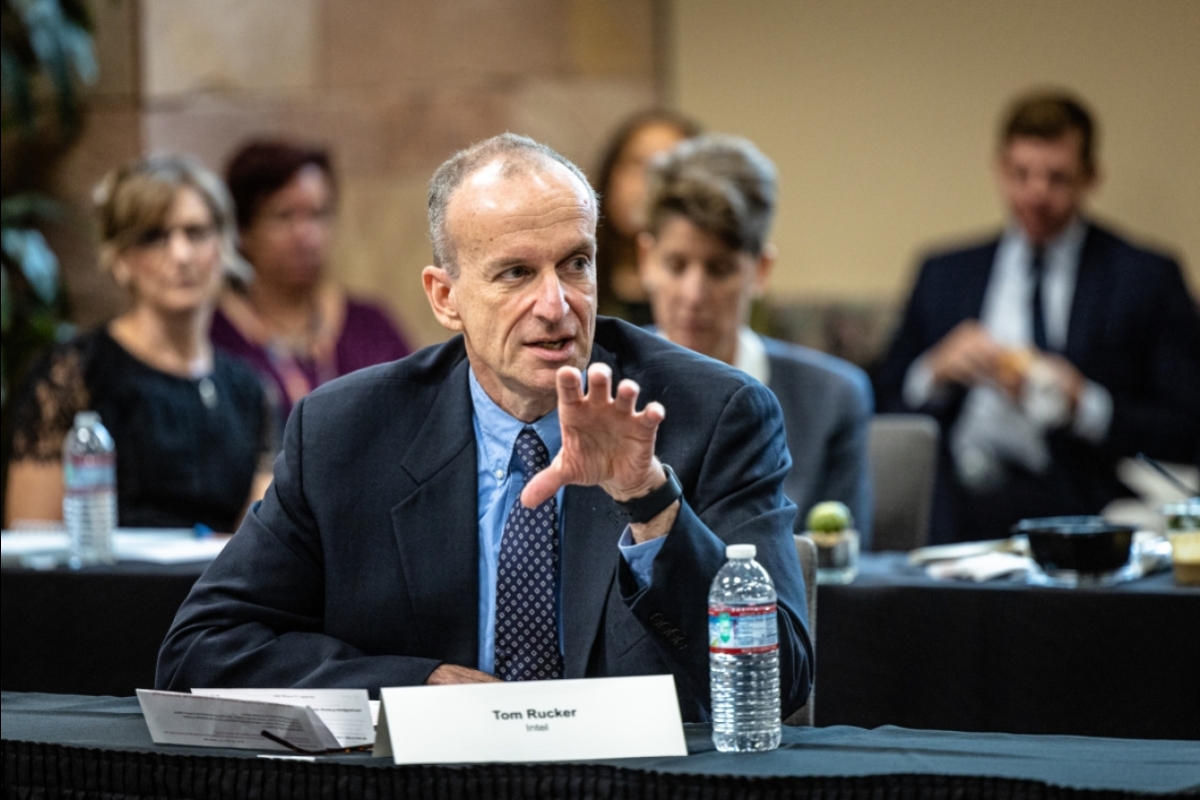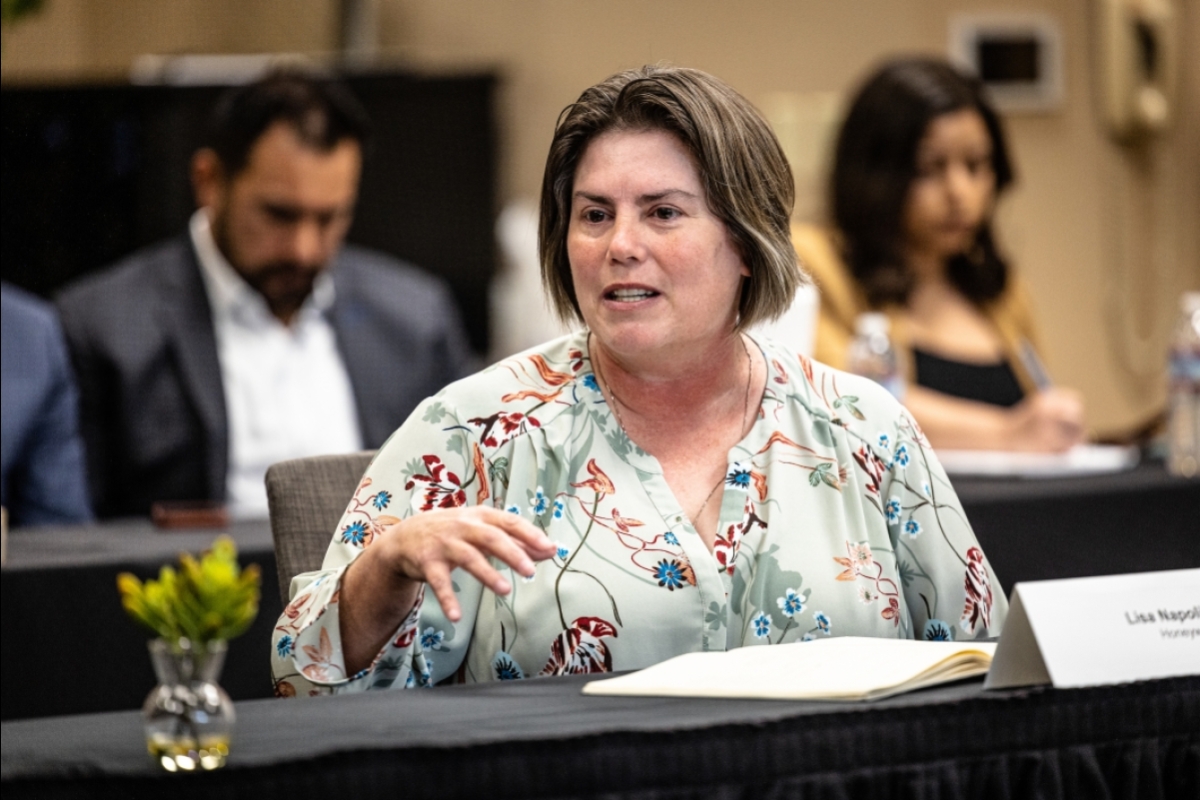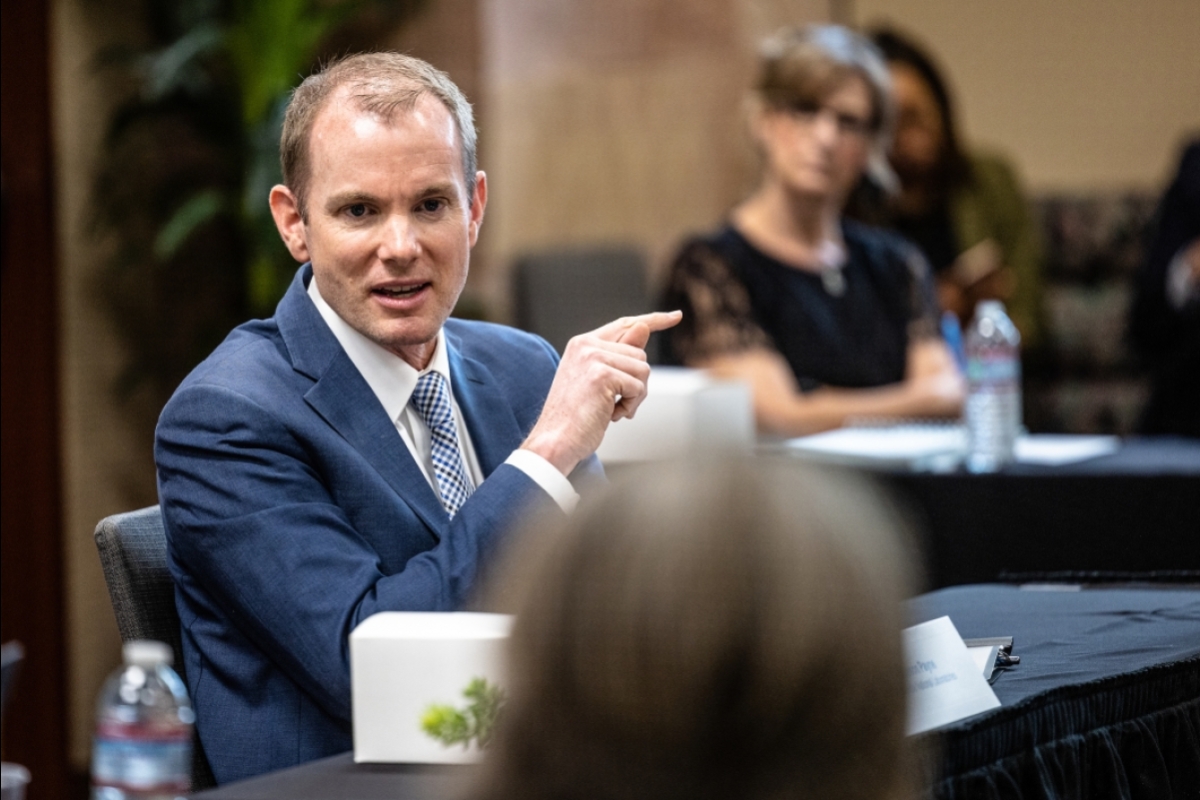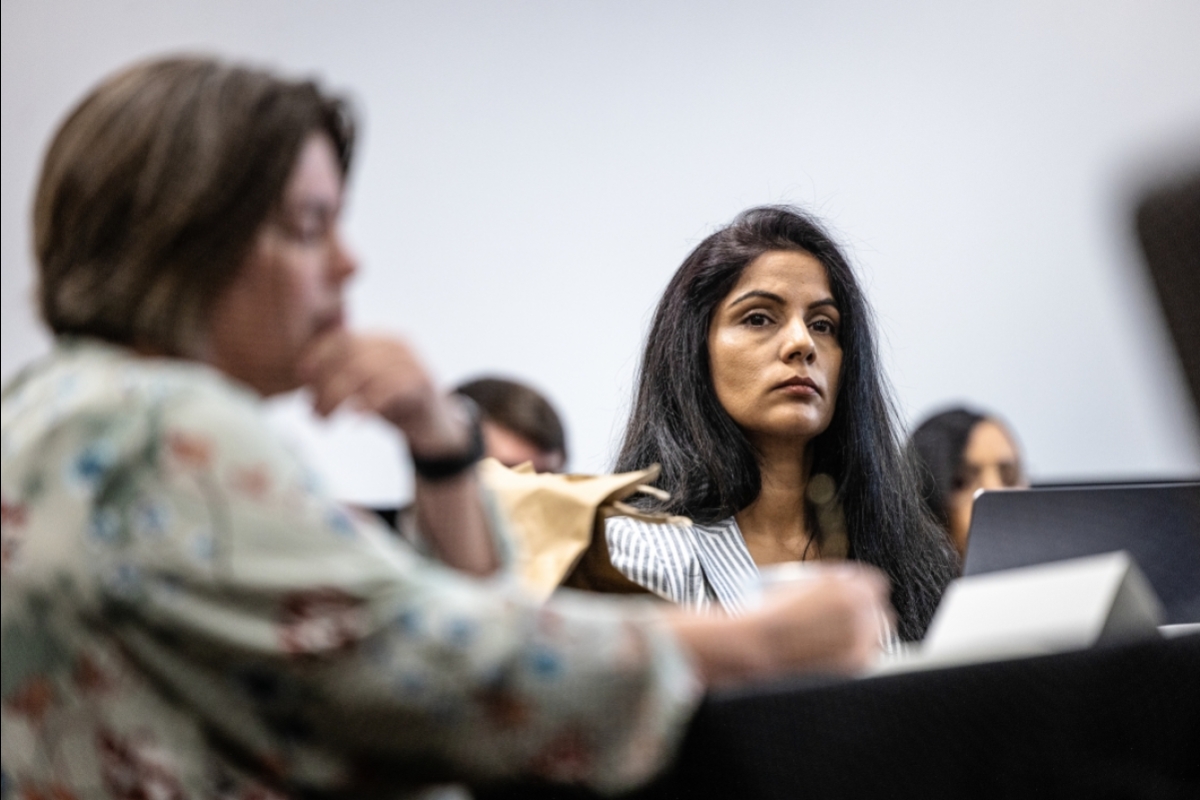Heidi Shyu, under secretary of defense for research and engineering at the U.S. Department of Defense, visited Arizona State University on Tuesday to see how ASU has positioned itself to help bridge the critical gap between technology created in a lab and solutions that are applied in real life.
Shyu serves as the chief technology officer for the DOD, mandated with ensuring the technological superiority of the U.S. military, and is responsible for the research, development and prototyping activities across the DOD enterprise.
During her visit, she said that a “valley of death” lies between lab research and large-scale fabrication.
“What I’m looking for is to leverage as much innovation as possible across the U.S. and figure out how to bridge the ‘valley of death’ and get that innovation into the hands of our war fightersThis term covers soldiers, sailors, Marines and airmen and -women.,” she said.
She visited the ASU MacroTechnology Works facility in Tempe, a unique lab and fabrication space that is open to both university researchers and community partners, from tiny ventures to big corporations.
“The fact we can tap into an incredible ecosystem right here is so impressive,” Shyu said after the tour. “The facility I just walked through, which allows small startups as well as faculty to tap into it, will be a major benefit.”
Shyu’s visit was important because the CHIPS and Science Act, passed with bipartisan support and signed into law this past summer, will distribute $52 billion to accelerate U.S. semiconductor manufacturing, an important step for economic competitiveness and national security.
“From the DOD’s perspective, we need a secure supply chain, from within the U.S. – that’s No. 1,” Shyu said during a roundtable discussion.
U.S. Rep. Ruben Gallego, a member of the House Armed Services Committee, said that the supply chain disruptions during the pandemic were a warning.
“We learned that we are very much dependent on overseas for our chips. Our overreliance on China is a scary situation,” he said.
“Right now, Russia is struggling to find any kinds of chips to put into their weapons systems. They’re taking them out of old washing machines.
“The defense system they had built over 100 years is now entirely moot because we have shut them out of the chips and they don’t have the capacity to produce them. We’re not far from that situation.”
Shyu said another priority is workforce development.
“The other thing, which is part of my responsibility, is STEM. We need to build a workforce to supply a talent base that not only the DOD needs but also our entire defense industry,” she said.
U.S. Rep. Greg Stanton agreed that workforce development is critical not only for national security but also for Arizona’s future.
“The long-term economic challenges from China will be the challenge of our lifetime, not just investing in manufacturing but in proper export control,” he said.
“Taiwan Semiconductor (Manufacturing Company) is the largest investment from a foreign entity in the U.S., and it’s happening right in our community. They won’t be a direct beneficiary of the CHIP and Science Act, but they’ll be able to take advantage of the workforce development. We want that to be a Taiwanese entity for decades to come.”
ASU President Michael Crow described how, as part of Arizona’s state-funded New Economy Initiative, the university is boosting the number of engineering graduates, growth that will serve the national objectives outlined in the CHIPS and Science Act.
“We’ve decided to use every means humanly available to go from 6,000 engineering students 10 years ago to 30,000 engineering students this year, and we believe we can build a 45,000-student, degree-granting college of engineering.
“Quality has accelerated in every case. Diversity has accelerated in every case. And intellectual fusion has accelerated in every case,” he said, noting that many students are working on defense-related projects.
ASU also is developing a program to upskill workers for the microelectronics industry – an urgent need voiced by Lisa Napolitano, vice president at Honeywell.
“Our products are very critical to the nuclear safety of our country, and we are on almost every mission that goes into space,” she said.
“When I’m trying to find new talent, it’s hard. We need people with four-year degrees, but two-year degrees are also important. We need those people in our fabrication labs.”
On Tuesday morning, Shyu heard about ASU’s work with the National Security Innovation Network to connect entrepreneurs to the defense industry and the DOD. Drew Trojanowski, assistant vice president for strategic initiatives at ASU, described how faculty were taught how to succinctly describe their technology and then received feedback on how to better meet the needs of the department.
This includes work ASU is doing in developing the Mission Acceleration Center, which provides DOD personnel, industry and an cademia mechanism to collaborate in a secure space so that industry — including startups — can better understand war fighter needs to then apply new technologies in field-deployable solutions.
Shyu praised the network for taking the initiative.
“How do we scale that?” she said. “I’m looking to scale this up across the nation.”
Top photo: Under Secretary of Defense for Research and Engineering Heidi Shyu meets Associate Professor Zachary Holman to begin a tour of MacroTechology Works in the ASU Research Park on Tuesday. Shyu’s visit also included a microelectronics roundtable with President Michael Crow, Arizona congressional representatives and executives from Intel, Sandia National Laboratory, Honeywell and Advent Diamond. Photo by Charlie Leight/ASU News
More Science and technology

Cracking the code of online computer science clubs
Experts believe that involvement in college clubs and organizations increases student retention and helps learners build valuable social relationships. There are tons of such clubs on ASU's campuses…
Consortium for Science, Policy & Outcomes celebrates 25 years
For Arizona State University's Consortium for Science, Policy & Outcomes (CSPO), recognizing the past is just as important as designing the future. The consortium marked 25 years in Washington, D…

Hacking satellites to fix our oceans and shoot for the stars
By Preesha KumarFrom memory foam mattresses to the camera and GPS navigation on our phones, technology that was developed for space applications enhances our everyday lives on Earth. In fact, Chris…
